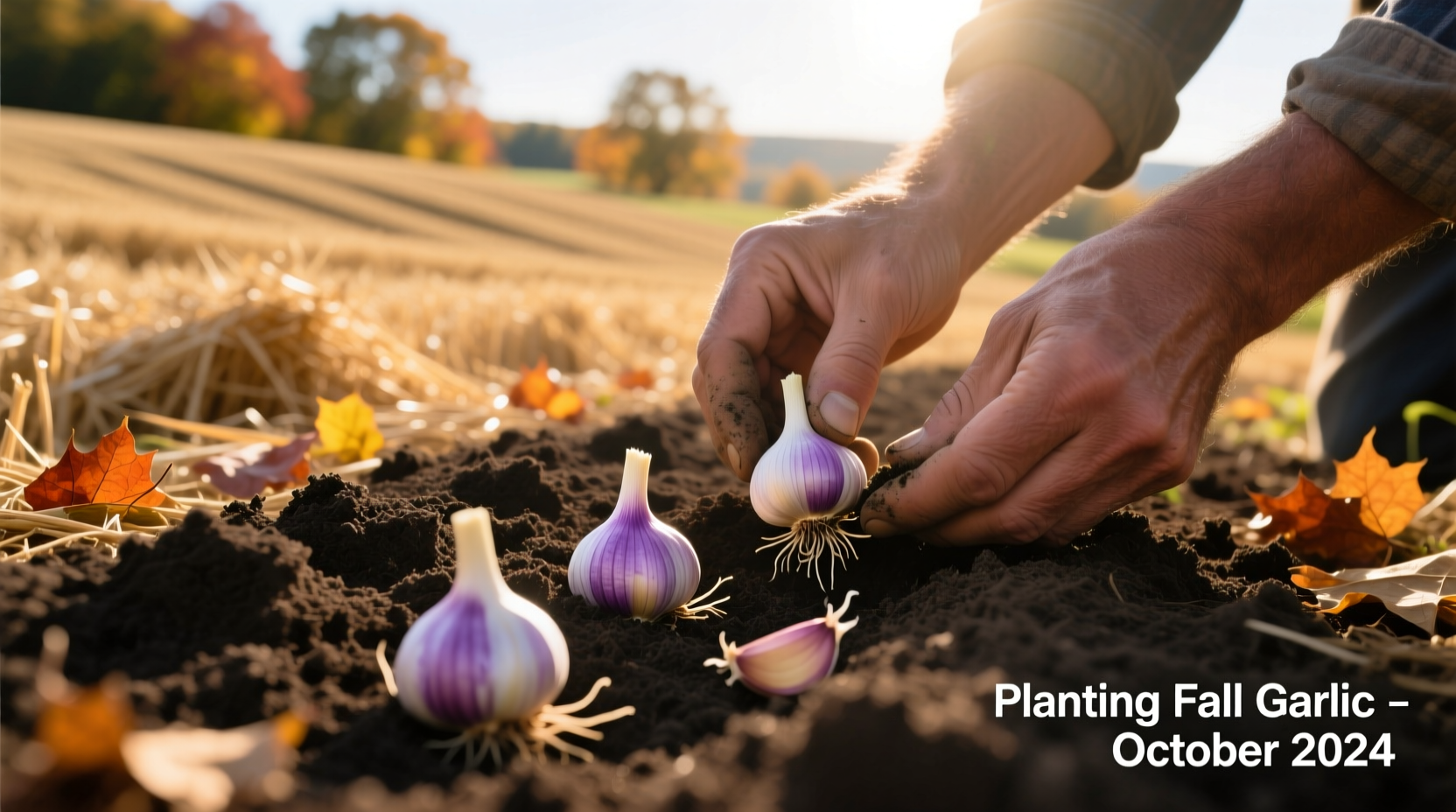Discover the secret to growing robust garlic that outperforms spring-planted crops. Fall planting gives garlic the crucial head start it needs to develop extensive root systems before winter dormancy. This biological advantage translates to 30-50% larger bulbs with more complex flavor profiles come harvest time. Whether you're a beginner gardener or seasoned grower, this guide delivers actionable steps for successful garlic cultivation.
Why Fall Planting Beats Spring Every Time
Garlic requires vernalization—a cold period—to trigger proper bulb formation. When planted in fall, cloves experience natural winter chilling that activates their growth cycle. University of Minnesota Extension research confirms fall-planted garlic develops stronger root systems before winter, giving plants a significant growth advantage when spring arrives. This biological head start results in larger cloves with more intense flavor compounds compared to spring-planted garlic.
| Planting Time | Root Development | Typical Bulb Size | Flavor Intensity |
|---|---|---|---|
| Fall (optimal window) | 4-8 inches before winter | Large (2-2.5" diameter) | Rich, complex |
| Early Spring | 1-2 inches by harvest | Small (1-1.5" diameter) | Mild, less complex |
Determining Your Perfect Planting Window
Your precise planting date depends on your USDA Hardiness Zone. The critical factor is planting early enough for root development but late enough to prevent top growth before winter. Consult this zone-based timeline:
- Zones 3-5: Late September to mid-October (aim for 6 weeks before first frost)
- Zones 6-7: October to early November
- Zones 8-10: November to early December
The USDA Plant Hardiness Zone Map provides the most reliable frost date estimates for your specific location. For precise timing, count backward 45 days from your average first frost date—this gives cloves sufficient time to establish roots without pushing green growth vulnerable to freezing.
Selecting Garlic Varieties for Your Climate
Not all garlic performs equally across climates. Hardneck varieties thrive in colder regions while softnecks prefer milder winters:
- Hardneck Success (Zones 3-7): German Extra Hardy, Chesnok Red, Music
- Softneck Champions (Zones 7-10): California Early, Inchelium Red, Silver White
- Cold-Tolerant Middle Ground (Zones 5-8): Spanish Roja, Persian Star
According to Oregon State University's garlic trials, hardneck varieties typically produce larger bulbs in northern climates but require proper mulching. Softnecks offer better storage (9-12 months) but need milder winters to thrive. For borderline zones, consider planting both types to determine what works best in your microclimate.
Soil Preparation: The Foundation of Flavor
Garlic demands well-drained soil with specific nutritional requirements. Follow these preparation steps 2-3 weeks before planting:
- Test soil pH (ideal range: 6.0-7.5) using a reliable kit
- Amend with 3-4 inches of composted organic matter
- Incorporate 5-10 pounds of well-rotted manure per 100 square feet
- Add 1 pound of bone meal or rock phosphate per 100 sq ft for bulb development
- Create raised beds 6-8 inches high in heavy clay soils
Penn State Extension research shows garlic grown in properly amended soil develops 25% larger bulbs with higher allicin content—the compound responsible for garlic's health benefits and pungent flavor. Avoid fresh manure which can cause cloves to rot.
Step-by-Step Planting Technique
Follow this precise method for optimal results:
- Separate cloves 1-2 days before planting (keep papery husk intact)
- Select largest cloves from outer bulb layers (they produce biggest bulbs)
- Plant pointy end up at proper depth: 2 inches in cold zones, 1-1.5 inches in mild climates
- Space cloves 6-8 inches apart in rows 12-18 inches apart
- Cover with soil and gently firm
- Apply 4-6 inches of straw or shredded leaves after ground cools

Winter Protection Strategies That Work
Proper mulching makes the difference between thriving plants and winter kill. Apply mulch after soil temperature drops below 40°F (4°C) but before hard freeze:
- Cold climates (Zones 3-5): 6 inches of straw plus windbreak
- Moderate climates (Zones 6-7): 4 inches of shredded leaves
- Mild climates (Zones 8-10): 2-3 inches of pine needles
University of Vermont studies show properly mulched garlic has 95% winter survival versus 60% for unmulched plants. Remove mulch gradually in spring as temperatures warm, leaving some protection around plants until danger of hard frost passes.
Spring Care for Maximum Bulb Development
As winter ends, shift your focus to supporting bulb formation:
- March-April: Apply nitrogen-rich fertilizer (blood meal or fish emulsion) when 4 inches of green growth appears
- April-May: Remove scapes (flower stalks) from hardneck varieties when they curl
- May-June: Water consistently (1 inch per week) during bulb formation
- June: Reduce watering as lower leaves yellow
Removing scapes redirects energy to bulb development, increasing final bulb size by 15-25% according to Cornell University research. Time your final watering to stop when the lower third of leaves turn brown—this critical timing prevents rot while allowing proper curing.
Harvesting and Curing for Long-Term Storage
Harvest timing affects storage life more than any other factor. Watch for these signs:
- Lower third of leaves turn brown
- Bulb wrappers become dry and papery
- Individual cloves fill out the wrapper
Dig carefully with a garden fork when 5-6 green leaves remain. Cure bulbs in a shaded, well-ventilated area for 3-4 weeks. Properly cured garlic stores 6-9 months at 60-65°F with 60-70% humidity. Softnecks can last up to 12 months under ideal conditions.
Common Mistakes That Reduce Your Yield
Avoid these frequent errors that compromise your harvest:
- Planting too early: Causes excessive top growth vulnerable to winter kill
- Using grocery store garlic: Often treated to prevent sprouting and may carry diseases
- Shallow planting in cold zones: Leads to frost heaving and clove exposure
- Overwatering in spring: Causes rot during bulb formation
- Harvesting too early/late: Reduces storage life and bulb size
Remember that garlic requires crop rotation—never plant in the same spot more than once every 3-4 years. This practice prevents soil-borne diseases and nutrient depletion that significantly reduce yields.











 浙公网安备
33010002000092号
浙公网安备
33010002000092号 浙B2-20120091-4
浙B2-20120091-4